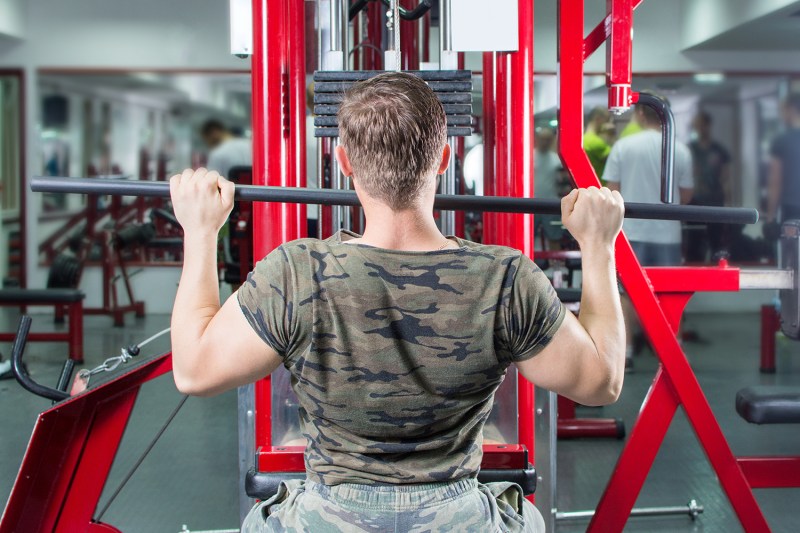Looking your best is impossible without good posture. Sitting or standing up straight involves core strength, balance, and flexibility. If you’re suffering from muscle pain and fatigue during the day, you might need to improve your posture. Doing so with proper training will decrease stress on your muscles, reduce your risk of injury, and increase your energy.
Finding the right ways to improve your posture will also lead to better body awareness. You’ll start to notice when you hunch over while walking or sitting. Focus on your posture while exercising, and you’ll begin to recognize other imbalances. You will naturally want to work on areas where you’re tight that you didn’t notice beforehand.
What muscles control your posture?

Your core stability, or postural muscles, are located in your abdomen, back, and pelvis areas.
In your abdomen alone, you have four layers of muscles. While some of these muscles help you bend and twist your trunk, the deepest layer also holds everything together. This band across your lower stomach is called the transversus abdominis.
Can you reverse bad posture?

Yes, you can reverse bad posture. Do this by regularly strengthening and stretching the muscles in your core, chest, and upper back. You can also make shoulder strengthening part of your regular morning routine. This includes squeezing your shoulder blades together and using a resistance band to pull your elbows back.
What are the benefits of maintaining good posture?

Good posture can:
Make it easier to breathe
With correct posture, you’ll find breathing is much easier. When you’re slouching over, you’re reducing lung capacity, and that leads to shortness of breath. When you can’t fully breathe, you can’t perform at your best in any capacity. Correcting your posture will improve your quality of life.
Improve your confidence
When you’re standing tall, you feel better about yourself. Studies show that students with an upright posture are more self-assured and score higher on math tests. Better posture may also reduce feelings of depression and increase feelings of self-confidence.
Lower your risk of injury
Proper posture helps protect your arms, wrists, shoulders, and back from injury. Back pain affects so many people and is blamed for thousands of missed work, school, and social hours every year. Walking and sitting with better posture will also lessen the chance that you suffer from fatigue or leg cramps.
5 exercises to improve your posture

1. Lat pulldowns
Lat pulldowns are a great way to strengthen your latissimus dorsi muscle. This is the broadest of all your back muscles. Exercising this muscle promotes good posture and a stable spine.
Instructions:
The bar of the lat pulldown machine should be where you can comfortably grasp it with an outstretched arm. You shouldn’t have to stand up achieve a full range of motion with your arms.
- Use a wide stance to grasp the bar overhand, with your palms facing forward.
- Keep your upper torso as still as possible, your feet flat on the floor, and engage your abs.
- Squeeze your shoulder blades and slowly pull the bar down until it reaches your chest.
- Stop here for a moment before slowly, with control, returning the bar to the starting position.
Recommended sets and reps: Four sets of 12 to 15 reps.
2. High planks
This exercise will strengthen your hamstrings, glutes, and shoulders. You’ll notice a relief in back pain and stiffness. You’ll also develop better back strength and core balance while improving posture.
Instructions:
- Get down on all fours and plant your hands beneath your shoulders.
- Straighten your legs so that your body forms a straight line.
- Hold this position for a pre-determined amount of time.
Recommended sets and reps: Three sets of 45 seconds.
3. Seated cable rows
Seated rows engage your major back muscles, which often get ignored during workouts. This will improve posture and relieve pain or soreness.
Instructions:
- Sit on the bench of the seated row machine.
- Bend your knees and grab the cable attachment’s triangle handle or bar.
- Make sure your outstretched arms don’t curl your lower back over.
- Engage your abdominals as you pull the bar to your torso.
- Release the bar back to the starting position before repeating.
Recommended sets and reps: Three sets of 10 to 12 reps
4. Overhead press
This weightlifting, upper-body exercise also engages your lower body to increase stability and balance. You’ll not only build strength and muscle mass, but you’ll improve your posture and performance in team sports.
Instructions:
- Grab a barbell with weights.
- Stand with the bar on your front shoulders and your hands positioned evenly on the bar.
- Tense up your abdominals as you push the bar up and above your head until your arms are straight.
- Bend your elbows and slowly bring the bar back down to the starting position.
Recommended sets and reps: Four sets of six to eight reps
5. Child’s pose
This resting yoga pose lengthens your spine, along with your glutes and hamstrings, through gentle stretches. It also helps you release lower back and neck tension.
Instructions:
- Sit gently on your shin bones.
- Put your knees apart, with your big toes touching.
- Fold forward at your hips as you walk your hands out and stretch your arms as far as possible.
- Hold this position as you maintain a straight spine, keep your gaze on the floor, and breathe deeply.
Recommended sets and reps: One set of 45 seconds
Frequently Asked Questions

Can you correct years of bad posture?
Yes, you can correct years of bad posture. The only time you’ll face limitations is if you’ve had a spinal cord injury or back surgery. Sometimes it’s hard to correct bad posture after a surgeon removes or fuses bones in your back. Otherwise, even with broken vertebrae, once they’ve properly healed, you can improve your posture.
Can exercise fix bad posture?
Yes, exercise fixes bad posture all the time. You can easily see improvement once you begin a routine that stretches your different core, chest, and back muscles. For example, every morning when you wake up, put your arms behind your back, grab each elbow or forearm, and hold that position.
Be mindful of your posture during everyday activities. While sitting at your desk, put a rolled towel behind your shoulders to remind yourself to sit up straight.
Put an alarm on your phone to take periodic breaks from sitting. Walk around the office, your home, or the neighborhood a few times each day. You’ll see improvements within a few months.
What causes poor posture?
When you do the same activities every day and night without thinking, you can easily develop negative habits. This can include favoring one leg over another while standing, slouching while sitting, or running without proper form. These habits slowly get worse and affect your posture.
Additionally, these incremental changes creep up on you before you even notice them. Then you realize you feel sore and uncomfortable, or someone points out that you’re slightly hunched over. This is how posture goes from bad to worse. Luckily, you can reverse the trend with mindfulness and exercise.



